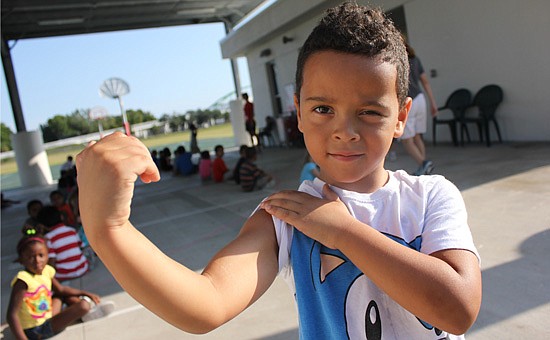- April 19, 2024
-
-
Loading

Loading

Yandell Ramos comes home nearly every day with a new piece of healthy advice for his family. He reads labels and serving sizes, demands a strict adherence to his at least one vegetable per dinner rule — “dinosaur food” asparagus is one of his favorite choices — relegates sugary juice to just the weekends as a treat and opts for water, and encourages everyone to take a brisk walk in the evenings.
“We have to follow the rules at home, too,” said Yandell’s mother, Mickey Ramos.
These are the rules 8-year-old Yandell has learned at Aloma Elementary School where he is a third grader. His physical education teacher Kathy Styron gives all her students healthy advice as Aloma’s Healthy School Team Leader, and Yandell has taken it all to heart. Styron’s work is part of a group of programs implemented at Winter Park, Maitland and Eatonville schools developed and sponsored by the Winter Park Health Foundation (WPHF) as part of its Coordinated Youth Initiative. Their aim is to improve the physical and mental well being of students, because healthy kids make better students.
Through this program, which has been adopted by all Orange County Public Schools (OCPS) as a model for caring for student health, the district was one of just eight districts in Florida to win the top Gold Award for the Florida Healthy School District. To get the gold, a school must prove it has developed and implemented policies to improve student health in categories ranging from physical education and nutrition services, to counseling and offering a healthy environment.
Debbie Watson, WPHF vice president and program director, said the healthy teams can really change the whole atmosphere of a school and its students’ views. Yandell isn’t the only kid at Aloma that’s excited to be eating more fruits and vegetables and exercising with his family.
“Kids come up and tell me what vegetables they ate last night,” Styron said. “They’re proud to say what they had for lunch.”
Lori Gilbert, senior director of OCPS Food and Nutrition Services, tests all new food choices in school lunch on the children to see what they like. Gilbert has got it down to a science. Students eat more apples when they’re sliced, like coleslaw on their pulled pork and plum sauce on their turkey.
“It’s not going to be healthy unless the kids are going to eat it,” she said.
OCPS students have to take at least one fruit or vegetable when they get school lunch, there’s a no soda or candy policy, and nothing is fried. They often try vegetables many students would never get the chance to eat at home.
“What they’re going to receive through the lunch line is often the healthier choice,” Watson said.
OCPS has also tripled the number of breakfasts served in the past five years, Gilbert said. Students are now allowed to take breakfast into the classroom if their bus is late. Many schools have breakfast carts set up to make it easier and if the school’s percentage of free and reduced lunch eligible students is great enough, all students get free breakfast. That first meal lets students focus on their studies, not their growling stomach.
“They’ve got the fuel to learn,” said Aloma Elementary Principal Drew Hawkins.
“It is so critical to their readiness to learn,” Watson said.
Not only are OCPS students eating better, they’re getting in some extra exercise in class. They call it “brain breaks.” Students take some time out of academics to get the wiggles out and recharge by taking five minutes to stretch or do some jumping jacks. Styron’s students love to run laps, and their monthly school walk and bike to school days continue to grow. It’s all part of the WPHF programs, and it’s making a difference; Styron said she doesn’t see nearly as many overweight students as she used to. Many students are embracing a healthier lifestyle, she said, just like Yandell.
“Because we want to live to be 105, that’s his [Yandell’s] answer,” Ramos said. “We want to live a long life, a healthy life.”